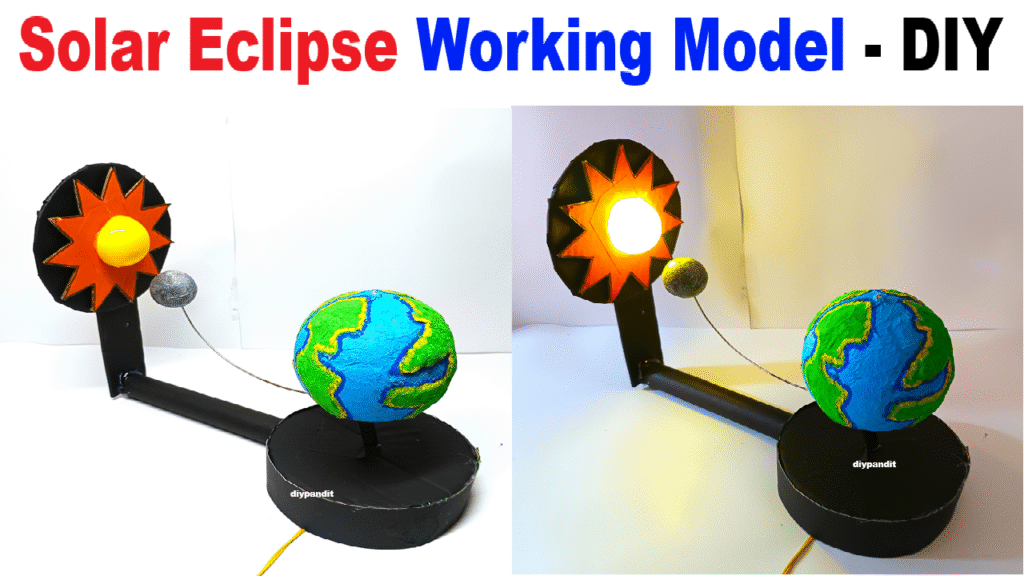This 3D model demonstrates both Solar and Lunar Eclipses.
The Sun, Earth, and Moon are represented by these three colored balls.
In a Solar Eclipse, the Moon blocks the Sun’s light and casts a shadow on Earth.
In a Lunar Eclipse, the Earth comes between the Sun and Moon, casting a shadow on the Moon.
This model helps us visually understand how celestial alignment causes these natural phenomena.

Concept Summary:
This model demonstrates:
- Solar Eclipse: When the Moon comes between the Earth and the Sun and casts a shadow on Earth.
- Lunar Eclipse: When the Earth comes between the Sun and the Moon, casting its shadow on the Moon.
Video Construction Steps:
Step 1: Base Setup
- Take a cardboard base or wooden plank.
- Mark three key positions for Sun, Earth, and Moon in a straight line (for eclipses).
Step 2: Mount the Balls
- Fix each ball on sticks/wires:
- Place the Sun on one side with a bulb or LED behind or inside it to simulate sunlight.
- Position the Earth in the center.
- Mount the Moon on the opposite side of the Sun.
Step 3: Add Rotating Function (Optional)
- If using a slow motor, attach it under Earth or Moon to demonstrate rotation.
- You can show how the Moon revolves around Earth to help explain when eclipses occur.
Step 4: Shadow Demonstration
- Darken the room slightly to demonstrate:
- Solar Eclipse: Move the Moon between Sun and Earth. The Moon casts a shadow on Earth.
- Lunar Eclipse: Move Earth between Sun and Moon. Earth’s shadow falls on Moon.

